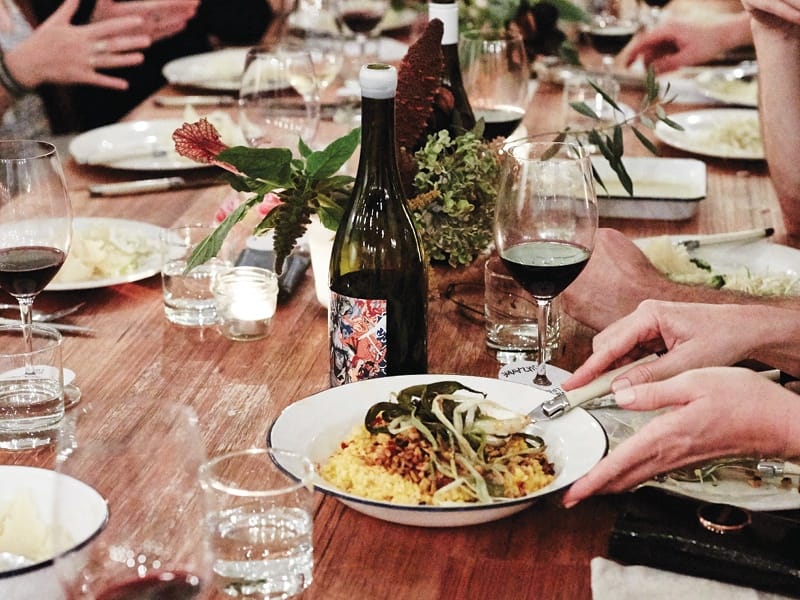
Grants, crowdfunding, renovations, education… establishing a cracking cellar door involves more than just bricks and mortar.
A first-time cellar door visit is like a blind date: you don’t know who is going to turn up, what they’re into, whether they’re just looking for a fly-by ‘taste’ of your good stuff.
In a limited amount of time, you’ve got to give them a warm welcome, suss them out, impress them with your setting, and wow them with your individuality, attention to detail, technical prowess, aesthetics, cooking skills, and the fruits of your labour.
If you play your cards right, you’ll get their contacts so you can catch up again, in person or online.
Setting up a cellar door can be an overwhelming process but done right, has the potential to boost revenue.
According to the 2016 Small Winemaker Production and Sales Survey results released by Wine Australia, small winemaking businesses generated $1 billion in wine sales revenue in 2015-16.
This was an average increase of 12 percent.
While retailers and wholesalers generated 47 percent of income, cellar doors have become increasingly important sales channels, accounting for 27 percent of revenue.
Whether you’re a big business or small winery, getting it right is important as, for many wineries, this is where it all comes together: tastings, sales, introducing your brand, database growth and feedback.
Opening a new cellar door can be time-consuming.
Just ask Frank Mitolo from Mitolo Wines.
The McLaren Vale winery’s cellar door opens in late 2017 after nearly 18 years, with more than four spent planning.
Frank describes the new build on McMurtrie Road as a bit of a moving beast.
The unique design comprises six retro-fitted shipping containers.
They added Konstantina doors, a large wraparound tasting bench, a private dining room, a restaurant, a function space, a private tasting room for wine club members and VIPs, and outside areas with bocce facilities.
Food ties back to the family’s Italian roots. “It had to reflect my mother and father’s home region, Abruzzo. It will all be centred around a bespoke wood-fired pizza.”
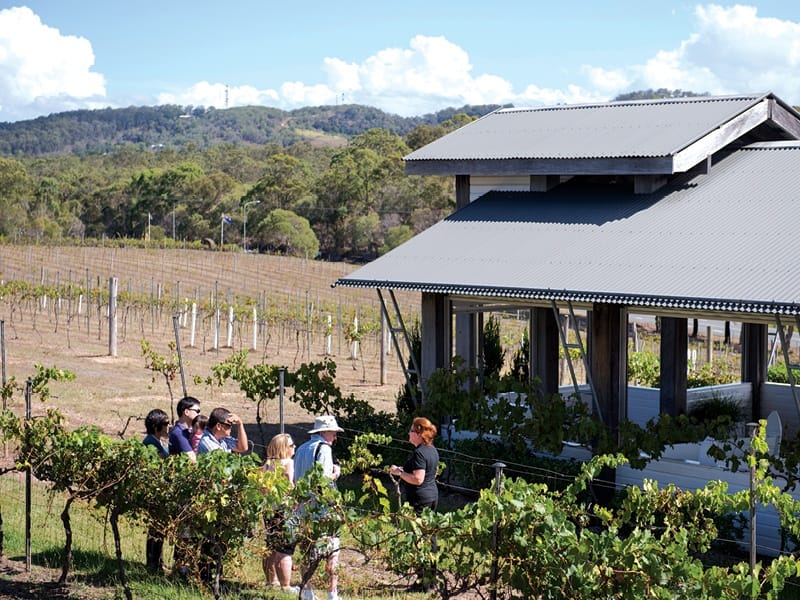
As a family-owned winery, it was important to integrate family.
The cellar door will be led by daughter Gemma – “the G of the GAM, my first ever wine, a single vineyard Shiraz”.
Good stocks of back vintage wine have been set aside for tastings.
“We want to showcase the virtues of aged McLaren Vale reds.
The actual tasting bench is unique as it enables a full walk-around experience, with tasting flights matched to specific anti pasto prepared in front of you.”
Constant evolution is important in maintaining a successful cellar door.
Small, family-run Mornington Peninsula winery Merricks Creek has been in operation for decades.
They began making wine in 2001 when a contract to sell their pinot noir crop collapsed.
Prior to that, they were grapegrowers.
They moved with the times (and customer demand) by adding a cellar door. Managing a cellar door and restaurant is new to winemaker Peter Parker and his son Sam but is an effective way to introduce their Pinot Noir and Chardonnay to people, with share plates to match.
The new open-plan cellar door is adorned with fireplaces – always a hit.
Improvements are an ongoing commitment.
Even if you’ve already stacked up accolades, it’s competitive out there.
The team at Fowles Wine is renovating in Avenal, north-east Victoria. The Strathbogie Ranges cellar door opened in 2001 and feeds through to a café and courtyard. It is a simple building made from mudbricks and timber from a nearby farm.
Future plans include a farm shop, tasting room, restaurant, private dining and function shed. Fowles has a focus on outdoor features. “We’re in the process of making the outside better: a natural playground, a feasting/picnic area and some animals for the kids.
It’s not sexy, but the carpark will be much improved,” CEO and vigneron Matt Fowles says. “We have also updated our POS to give a better service experience and we will introduce some cool IT-based educational tools.”
Matt believes knowledgeable staff, amusements for children, some informal education, and great wine and food are essential.
“We have chosen to go down the full dining experience, but even simple spreads, cheeseboards or picnics create a great extension to the experience. We find people want to slow down with us – what better way to embrace country life than through local food?”
Live theatre is also part of the experience. “We are in a sparsely populated region, so live theatre is very well received.”
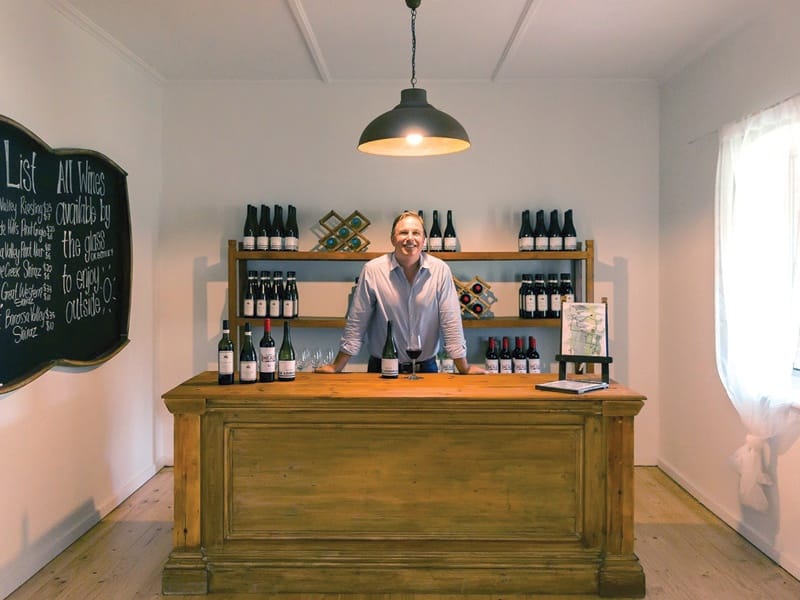
Fowles Wine has plenty of Victorian Tourism Awards brag rights. In 2014 they were placed in the RACV Hall of Fame for Best Victorian Tourism Winery (family-owned Pizzini Wines in the King Valley wine region bagged the 2016 crown for Tourism Wineries, Distilleries & Breweries – their cellar door has a cooking school, hosts food events and has vineyard accommodation).
“Accolades help us, for sure,” Matt says.
“We’re based near the Hume Highway, so anything to give people an excuse to stop. It’s also important for our team. They take a lot of pride in what we do and they love the well-deserved recognition.”
Staffing, he says, is key. “We have several people who share the lead, and our head of retail invests a lot of time training them.
About 25 percent of our revenue comes from cellar door. I absolutely believe it’s our most important marketing opportunity.
There’s no doubt in my mind that our cellar door helps sales down the line, in restaurants and wine outlets.”
The figures back it up. An Australian Wine Industry Cellar Door Research Study (conducted in 2013 across 79 wineries in 15 wine regions across Australia) looked at the impact on the public’s behaviour over a six-month period following a cellar door visit.
The buyer group (54 percent of all visitors) bought an average of 9.1 bottles of the winery’s wine and the likelihood of future purchase was an average of 47 percent. A majority of these purchases were from large national liquor chain stores (33 percent).
Cellar door revisits clocked up a further 23 percent, and direct-to-consumer channels – mail order, wine clubs and online orders – collectively accounted for 31 percent of the purchases.
If they love a specific cellar door, chances are they’ll bang on about it.
The study found that within three months of visiting, a total of 83 percent of consumers recommended a wine from the winery, mostly to friends, family and work colleagues.
Face-to-face conversation accounted for most (65 percent) recommendations, while social media (particularly Facebook) was seven percent.
Positive brand awareness can go a long way.
That’s why Hamish Seabrook, managing director and winemaker at Seabrook Wines, says hard work pays off. “If people have a good experience, you betcha they will tell their friends, repeat visit and buy your wines when they see it in a restaurant or bottleshop,” he says.
“Having the cellar door has impacted our business hugely already and we have only been open two months. It’s given us a huge amount of exposure both locally and nationally, all sorts of people have come out of the woodwork to support us.”
The cellar door has also enabled them to build a better database of customers (they offer discount of 10 percent to 1878 club members, so they join at the cellar door) and grow sales direct to customers. “It’s such a great feeling to start building loyal customers who are genuinely interested in what we are doing and who want to buy our wine.”
For Hamish, history was a driving factor when planning the new Barossa Valley cellar door.
The business was established in 1878 (as WJ Seabrook & Son) and the classic Seabrook label from the seventies was championed by Tom, Doug and Iain Seabrook of Seabrook Wine Merchants in Melbourne.
The Vine Vale cellar door opened in December 2016. Black-and-white photos of long-gone relatives hang above sofas in the comfy tasting space.
“We restarted the family business in 2005 in Victoria whilst I was winemaker at Bests Wines,” Hamish says.
“We were a virtual winery for some time, with me making my own wine wherever my career took me.”
Hamish found the perfect property in 2014: a beautiful but rundown 20-acres full of potential, vineyards and space to build their home and brand. “The property had a very basic heritage cottage (built in 1854), just begging to be converted into something special.”
It is now a tasting room. The views are stunning and it is also on a major tourist route, between the towns of Tanunda and Angaston. The family lives on-site.
Sounds easy? It wasn’t. A council development application had to be approved (“we weren’t sure if we’d even be allowed to build and keep the cottage.”). They also had to consider room for growth and possible winery building later on.
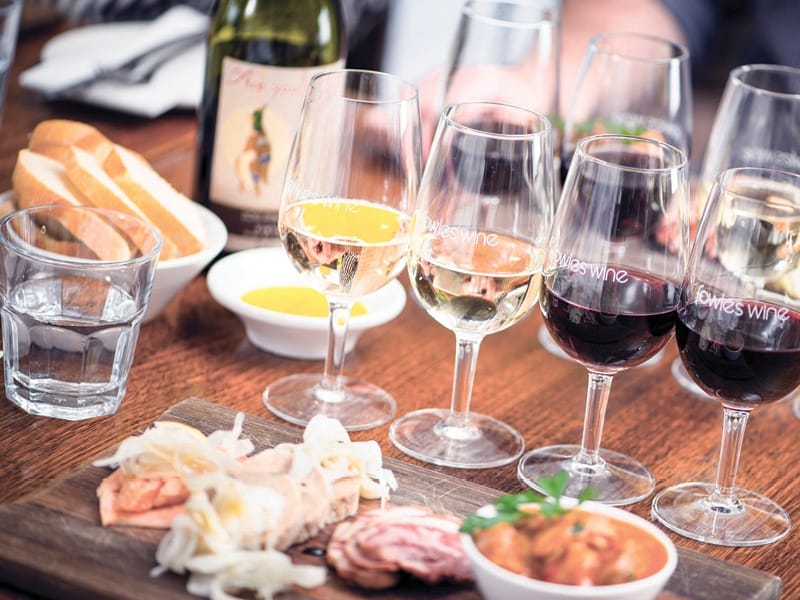
Hamish likes cellar doors with a variety of tasting spaces and experiences for people to choose from, and has plans to expand the cellar door to include a private underground cellar (converted from original underground stone tank) where they can offer more structured tastings and back vintages, another private lounge tasting room and a large deck overlooking the estate vineyard where guests can enjoy a glass of wine and a platter.
That task is made easier after a successful application in the PIRSA (Primary Industries and Regions SA) Cellar Door Grant program.
You can have the best architecture and technology but Hamish says it’s nothing without friendly, knowledgeable customer service. “I believe that cellar doors need to offer a genuine and authentic experience that is a true reflection of the brand and the product.” For now, he staffs the cellar door himself.
“When guests visit us, they are greeted by not only the winemaker but the vigneron, sales manager, finance manager and chief toilet cleaner all in one!.
“But in all seriousness, its essential that the cellar door staff have the same vision and energy for the wines as me. If they believe in the product and the story, their passion and enthusiasm will naturally flow onto the customers.”
He is accompanied by an electronic point-of-sale iPad “which also keeps the tunes going”.
Grants aren’t the only way to raise the cash needed to create a cracking cellar door.
Matt Rechner, winemaker at McLaren Vale’s Ekhidna Wines, called on loyal fans to help re-open at a new venue on 31 March.
Through a crowdfunding campaign, he put together a range of packages for people who donated towards renovation expenses. In return for a donation, rewards ranged from a first drink on the house for a year (for a $100 donation) to dinner for two at the new Ekhidna restaurant, museum wine and guided tasting ($300) right up to The Rechner Experience ($5000), where Matt will host a day of tasting and experimentation to handmake a wine blend for the donor, with 40 cases of the unique wine delivered to their door.
The success of such a campaign is a reflection on a brand’s loyal following.
“We are 110 percent customer focused. I make beer, wine and the restaurant adds the glue that binds them together.”
But what if you don’t have the time or space for a cellar door? There are alternatives. McLaren Vale vigneron Ian Adam, from Dabblebrook Wines, is a small producer who loves his weekends.
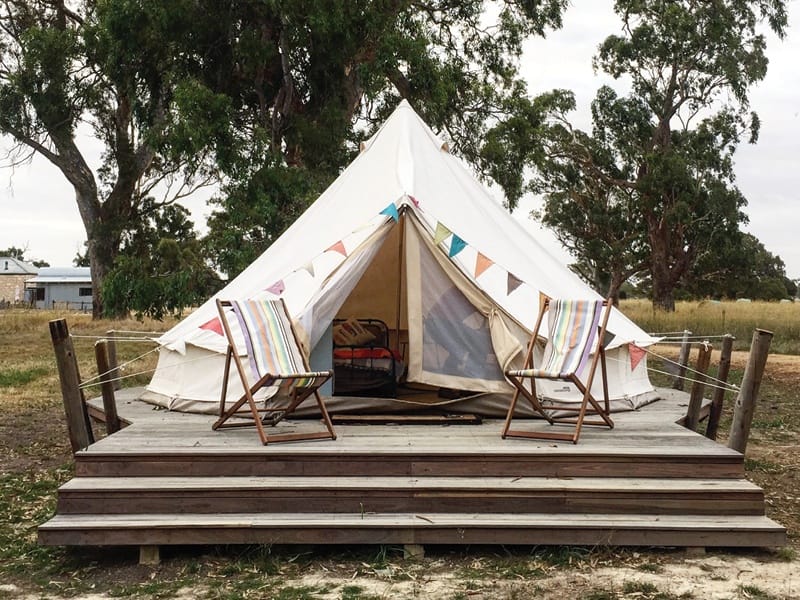
Dabblebrook doesn’t have a cellar door (yet) but Ian spreads the brand’s message through other means.
Tastings (at home on the property) are by appointment only for six or more people.
“We recently did the three-day Cellar Door Festival at Adelaide Convention Centre, which was great exposure to a vast range of punters,” he says. The McLaren Vale and Fleurieu Visitor Information Centre rents out a cellar door ‘pop-up’ space at two-week intervals.
“We did a stint over the Christmas break that was a success and we have a regular spot once a month at the Willunga Farmers’ Market.” He also uses social media to spread the word.
No matter where or how you connect with your customers, Ian believes it’s all about real hospitality – and a knowledge of the wines you’re showing.
“It’s where people of all levels of knowledge of wine should be able to come and find out what you’re doing and what makes your wines different.”
A bad cellar door experience? “Arrogance. Winemakers and staff who think they are more interesting than the wine. Calm down sunshine, we are here for the wine.”
The benefits of a positive impression can last decades. “A visit to Rockford Wines in the Barossa in the very early nineties left a lasting impression on me,” Ian says.
“Robert O’Callaghan and his crew described the wines, the process, the style with such zeal that you wanted to dive into the bottle. You went away feeling someone had shared something precious with you.”
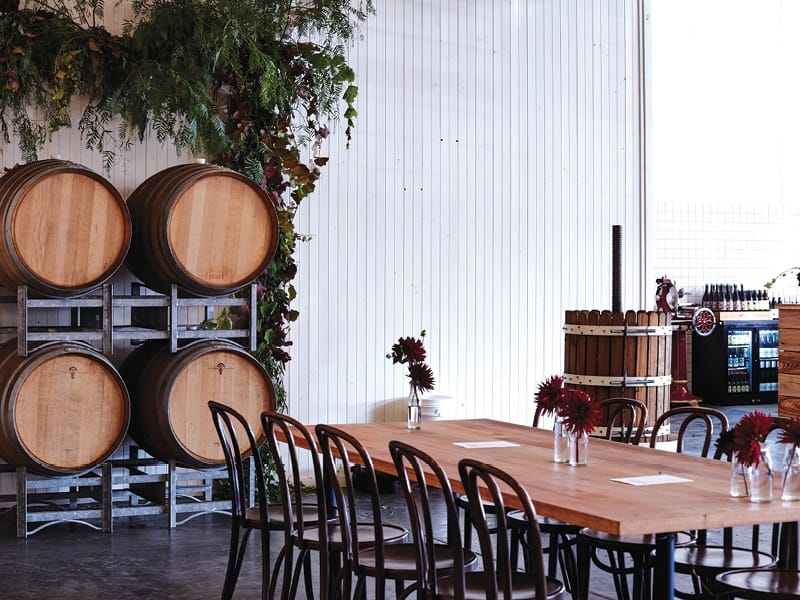
Think outside the box
Vinteloper doesn’t have a cellar door but that doesn’t stop winemaker David Bowley reaching the masses through face-to-face contact.
He launched The Urban Winery Project in Adelaide during 2012 and the roving winery has since popped up across the country.
“We started it for three main reasons,” David says. “Firstly, because no bigger winery would have the balls to do it. Secondly, because we believed people wanted to get the insider view of how wine gets into their glass, and finally, because we felt like if people could learn about and participate in the making of wine in this way, it would make every glass of wine they have for the rest of their life taste better, knowing what’s gone into it.”
They bring in all the equipment: fermenters, tanks, barrels, presses, even forklifts if they need them.
Then there are the fresh grapes, of course. “We take the wines we make as a community during the event back to our permanent winery and mature them over the next 11 months before bottling them as a limited release.”
While it’s all about connection and education, food is an important part. In 2016, Urban Winery Project spent four weeks at Gather & Tailor Warehouse in West Melbourne. Four top chefs cooked up a storm.
In March 2017, the project hits Sydney for the first time, in collaboration with Three Blue Ducks and MasterChef 2012 winner Andy Allen.
David isn’t averse to the concept of opening a fixed cellar door, it’s just about timing. “Simply opening a cellar door doesn’t mean people will visit. We’ve focused on building the tribe first, then building the clubhouse.”
He believes a successful cellar door is a place where the style and presentation fit the values of the winery and the style of the wines, whatever they are. “Later in 2017 we expect to announce the opening of our own permanent cellar door in the Adelaide Hills. Those that know how we love to challenge traditional thinking should have some idea that this is going to be a little bit different.”
Accommodation rules
Boutique accommodation is a drawcard. Nothing beats a kip after a lazy afternoon’s tasting.
Sue Bell, from Bellwether Wines in South Australia’s Coonawarra region, installed Bell Tents on the rural property that is home to her cellar door. Sue originally dreamt of having a bunch of vintage caravans but when van prices skyrocketed, she went for the glamping option instead.
Four luxury tents are a short stroll from the cellar door, set in an 1868 Glen Roy Shearing Shed. They’re a handy option for people who want to make the most of the wine on offer at intimate six-course degustations seated around the cellar door’s old wool sorting dinner table.
Personal chef Kirby Shearing and the winemaker wait the table. Dinner with matching wines, and accommodation, is $500 per couple.
Bellwether also offers educational experiences. Sue has a lot in her noggin to share – she is an experienced wineshow judge, Dux of the Len Evans Tutorial and Australian Society of Viticulture and Oenology Winemaker of the Year.
Armed with pearls of industry wisdom, she leads groups of 10 to 12 people through wine appreciation courses and cooking classes with top chefs.
Special experiences
Vasse Felix opened their Margaret River cellar door in the late 1970s and has evolved over the years.
Originally a small tasting room, the cellar door now includes a wine tasting bar, award-winning fine-dining restaurant, art gallery, wine lounge (serving wines by the glass, cheese and charcuterie) and a museum space called The Vault.
Tours are an important part of their offering. “We offer four tours which have distribution with key tourism operators through Ultimate Winery Experiences Australia,” marketing communications manager Emily Sharland says.
“This aspect of our business is growing, particularly in the domestic and Singapore markets. The experiences fuse behind-the-scenes, wine and culinary experiences.”
Small groups are hosted by specialised members of the Vasse Felix team.
“Some people do come specifically for the gallery or restaurant, but the majority will engage in a wine experience, irrespective of what motivated them to visit. Fundamentally, the most important thing is friendly and welcoming staff. If you take everything else away, the ability to build rapport with a visitor is what matters most. If someone has travelled across the world and chosen to visit your wine region, and select your estate, then that is a person worth learning about and making a connection with. So often there is a tendency in cellar doors to speak at visitors rather than engage with them.”
Be tech savvy
Free WIFI is a no-brainer. A free, speedy internet connection encourages people to snap and upload cellar door photos to social media while they’re still on site. Let them do the positive marketing for you. Combining tech with tours and email sign-ups is also beneficial. Whatever makes it easy for the customer.
Or, encourage them to commit to visiting before they come to the region.
That’s what O’Reilly’s Canungra Valley Vineyards does.
How do you lure visitors to a cellar door at the bottom of a Queensland mountain? Grab their attention online and get them to pre-book a picnic basket.
Since opening in 1999, the winery has added a few modern touches to their heritage-packed cellar door in the Gold Coast Hinterland. Visitors can pre-book picnic baskets from home with the click of a mouse.
For $70, two adults (a little more if you’re vegetarian or gluten free) get freshly prepared food, cutlery, crockery, a picnic rug and a free wine tasting. There’s a cook-your-own-breakfast picnic basket option, too.
The cellar door is open seven days a week. That’s a lot of picnics. The O’Reilly family is also behind nearby O’Reilly’s Rainforest Retreat (in Lamington National Park). Both are popular wedding locations so the cross-marketing doesn’t go astray either.
WFA guide to a successful cellar door
Location
Close to, or preferably part of, a main tourist route.
Your proximity to target markets and/or high-population areas.
Your ability to attract visitors year round.
Being part of a strong tourism region and/or close to other wineries.
First impressions
Brand consistency through your signage, buildings, grounds and facilities.
Professionally presented and maintained entrance, grounds and buildings.
Authenticity and a clearly recognisable point of difference.
Signage
Strong entry statement that entices visitors to stop.
Good directional signage into and throughout your property.
Extra selling points
Adequate parking for a range of visitors, including buses, caravans and limousines.
Your ability to create a destination in your own right.
Features that encourage referrals from other wineries and attractions.
Family-friendly facilities and grounds.
Links with nature-based activities.
A range of facilities that lead to a ‘total tourism experience’.
David LeMire MW’s Top 10 Traits of a Successful Wine Business
Related content






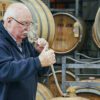



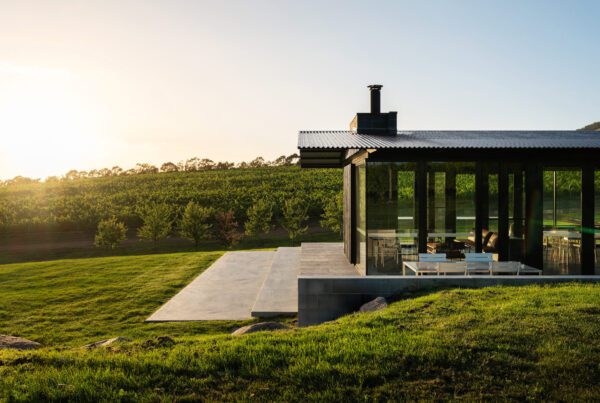
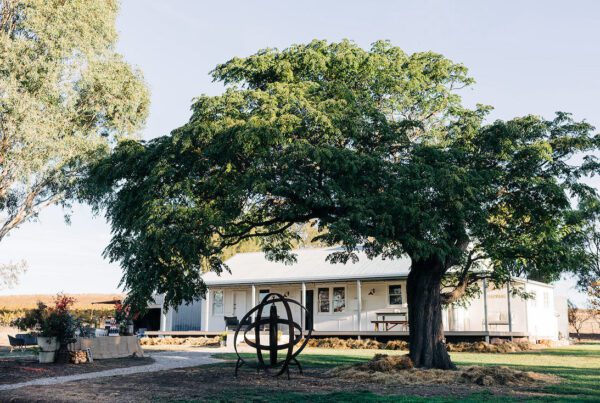

Recent Comments